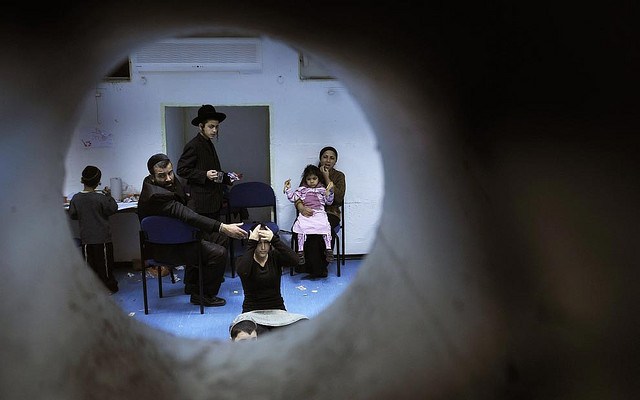Israel – a successful experiement?
The case of Israel makes us reflect on the challenges of the coexistence of different religious communities, with their own beliefs and traditions and, sometimes, incompatibilities, internationals have not found a functional recipe for.
| Suggested Reading | Conflict Background | GCCT |
By Nicasia Picciano
Israel is a state continuously fighting for its survival and surrounded by enemies. Traditional Jewish belief holds that the land of Israel (Eretz Israel) was given to the Jewish people by God. And the Palestinians believe the same.
Since the end of the 20th century, many Jews relocated to Palestine. In total there were five migratory waves (1882-1903; 1904-1914; 1919-1923; 1924-1928 and 1932-1939) until today. This immigration greatly increased the Jewish population of Palestine; from about twenty-four thousand people in 1882 to more than six hundred thousand in 1948. Continued growth pleased the Zionists, who supported a Jewish homeland in Palestine, but began to alarm the Arabs. After the pogroms and genocide under Nazi Germany, many Jews moved to Palestine and 688,000 people arrived during the first three years of the nation, 1948-1951.
Palestine, like the rest of the Middle East, was under the Ottoman domain that had guaranteed stability in the region from 1516. At this time the populations of Palestine, Greater Syria, Lebanon, and Mesopotamia (later Iraq) were left under the control of Arab families. However, the collapse of the Ottoman Empire, and the establishment of France and Britain as the main powers in the region at the end of World War I, changed the geopolitical map of Palestine. Both countries wanted to secure their own power and Britain, in particular, explicitly stated through the Balfour statement (1917) that, “His Majesty’s Government view with favor the establishment in Palestine of a national home for the Jewish people, and will use their best endeavors to facilitate the achievement of this object, it being understood that nothing shall be done which may prejudice the civil and religious rights of the existing non-Jewish communities in Palestine, or the rights and political status enjoyed by Jews in any other country.”
By the end of the 1930s it had become apparent to all that the Jews and the Arabs were not willing to live together in Palestine. In addition, the pogroms by the Nazis aroused sympathy towards the creation of an independent state for the Jews. Meanwhile, British forces left Palestine on May 14, 1948, and on that same day David Ben-Gurion, the first prime minister of Israel, proclaimed the existence of the state more or less within the borders defined by the plan of United Nations partition (1947).
Israel was established as an independent state on May 14, 1948. The next day, the armies of Egypt, Iraq, Lebanon, Syria, and Transjordan invaded the newborn country. The war lasted until August 1948 and Israeli forces expanded their territory in the north, capturing the entire northern neighborhood of Palestine to the Lebanese border and making real gains both in the extreme north and in the south of the West Bank. By then the state of Israel was a reality recognized by the United Nations and welcomed by a large part of the international community. However, its existence was not easy.
No doubt the establishment of the State of Israel was an international construction as others exist globally (Kosovo). And if its existence was favorably received by the Jews, it met the firm opposition of the Palestinians, who felt threatened in their religious, cultural, economic, and political interests. Therefore, the Balfour statement was considered an amoral, unfair, and illegal promise of the English by the Palestinians. Thus, the Zionists were nothing more than invaders supported by a foreign power (Great Britain).
The struggle for two peoples for this small spot of land is not linked with economic interests, but it is due to religious belief. In fact, Palestine/Israel is a country of only 10,000 square miles, more than half of which is uncultivable. Nor does it have raw materials or industries. Most of the agriculture is collectivized. In the kibutzim (agricultural communes), all the properties are common and all the members contribute and share them equally.
Still, the hostilities between Palestinians and Jews are alive until today. In addition, the country is not united. The Gaza Strip is under Palestinian control and cities like Ramallah, Nazareth and Bethlehem are poor and the majority of people living there are Muslim. On top of that controls, not only at the airport, but also in shopping centers, religious sites and bus stations make you feel living in a place where distrust is still omnipresent. Is Israel a successful international engineering experiment?
It is difficult to answer. However, this case makes us reflect on the challenges of the coexistence of different religious communities, with their own beliefs and traditions and, sometimes, incompatibilities, internationals have not found a functional recipe for.
Nicasia Picciano holds a PhD on European conflict management in Kosovo from the University of Flensburg, Germany. Her research interests are peace- and state-building, ethnic conflict and EU enlargement in the Western Balkans. The article is part of the wider research supported by the Kosovo Foundation for Open Society in the context of the project ‘Building Knowledge about Kosovo (v.2.0)’ whose findings will bepublished soon.
The views expressed in this article do not necessarily reflect those of TransConflict.
Interested in writing for TransConflict? Contact us now by clicking here!
T



















